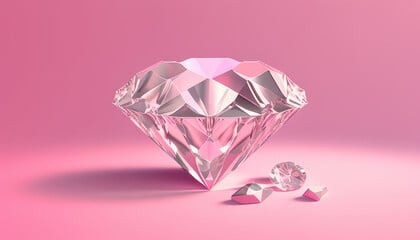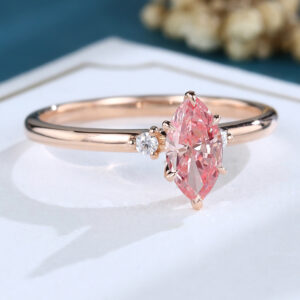What is a Laboratory-Grown Pink Diamond Ring?
0 comments
SHOP BY STYLE ✧
SHOP BY SHAPE ✧
![]()
![]()
![]()
![]()
![]()
METAL COLOR ✧
WEDDING BANDS
SHOP BY STYLE ✧
![]()
![]()
![]()
SHOP BY STONE ✧
SHOP BY METAL ✧
JEWELRY FOR THE BIG DAY
NECKLACES ✧
EARRINGS ✧
BRACELETS ✧
Engagement ✧
SHOP BY SHAPE ✧
![]()
![]()
![]()
![]()
![]()
![]()
SHOP BY COLOR ✧
SHOP BY CATEGORY✧

FEATURED✧
SHOP BY CATEGORY✧
SHOP BY OCCASION✧
SHOP BY PRICE✧

Birthstone Jewelry

In the fascinating world of gemstones, the allure of diamonds, with their unmatched brilliance and durability, has captivated hearts for centuries. While natural diamonds have traditionally held the spotlight, a new star has been steadily rising in popularity: the laboratory-grown pink diamond. These marvels of modern science offer a combination of beauty, ethics, and sustainability that is increasingly appealing to consumers. This article delves into the realm of laboratory-grown pink diamonds, shedding light on their creation, characteristics, advantages, and how they stand apart from their counterparts. Understanding how to evaluate these gems, when to wear them, and how to care for them can enhance their enjoyment and longevity significantly. Be your comprehensive guide to navigating the world of laboratory-grown pink diamond rings.
Laboratory-grown pink diamonds are the product of advanced technological processes that mimic the natural conditions under which diamonds form over billions of years. There are two primary methods used to create these gems: High Pressure-High Temperature (HPHT) and Chemical Vapor Deposition (CVD). Both processes start with a diamond seed, which is subjected to extreme pressures and temperatures (in the case of HPHT) or placed in a chamber filled with carbon-rich gases (for CVD). Over time, the diamond seed grows, layer by layer, into a larger diamond.
The composition of laboratory-grown pink diamonds is identical to that of their natural counterparts, consisting of carbon atoms arranged in a crystal lattice. However, the distinctive pink hue is achieved through a careful manipulation of the diamond’s growth environment, including the introduction of specific elements like boron or nitrogen, or by creating structural anomalies within the crystal lattice that affect how light is absorbed and reflected.
The enchanting pink color of these diamonds is primarily due to structural distortions within the crystal lattice, often created through the aforementioned introduction of certain elements or by subjecting the diamond to additional treatments post-growth, such as irradiation or annealing. These processes alter the way light travels through the diamond, resulting in the pink color that makes these gems so sought after.

Laboratory-grown pink diamonds boast several compelling characteristics and advantages over their natural counterparts:
The primary difference between laboratory-grown pink diamonds and their colorless or differently colored laboratory-grown counterparts lies in the specific conditions under which they are created. Achieving the pink color requires precise adjustments to the diamond’s growth environment or post-growth treatments, which are not necessary for producing colorless or other colored diamonds. Furthermore, pink diamonds, even those grown in a laboratory, are relatively rare compared to colorless diamonds due to the complexity of replicating the conditions needed for their pink hue to emerge.
When assessing the quality of laboratory-grown pink diamond rings, the traditional 4Cs of diamond quality—Cut, Color, Clarity, and Carat—apply, with some nuances:
Additionally, the origin of the diamond (certification that it is laboratory-grown) and the type of metal used in the ring setting can also influence the overall quality and appearance of the piece.


Laboratory-grown pink diamond rings are versatile and can be worn on various occasions, from everyday wear to special events:
To ensure your laboratory-grown pink diamond ring maintains its sparkle and beauty, follow these care tips:
In conclusion, laboratory-grown pink diamond rings represent not just a symbol of love and commitment but also a testament to human ingenuity and our advancing commitment to sustainability and ethical responsibility. As technology and techniques continue to evolve, these stunning creations are likely to become an even more integral part of the gemstone landscape, offering a perfect blend of beauty, ethics, and affordability.